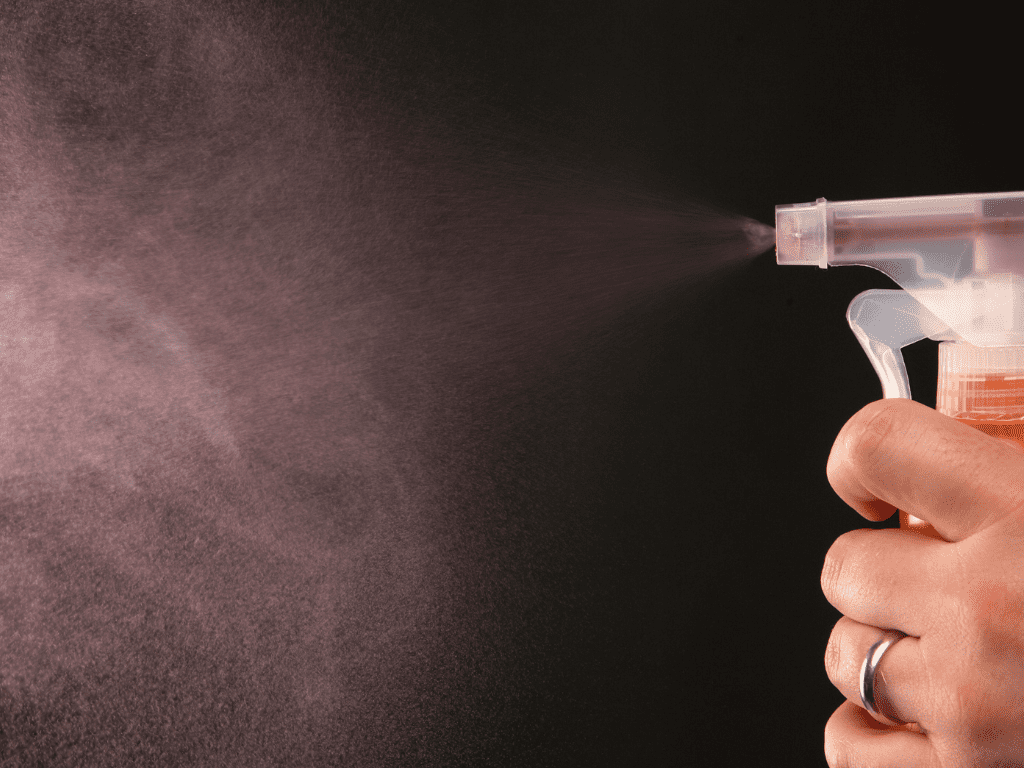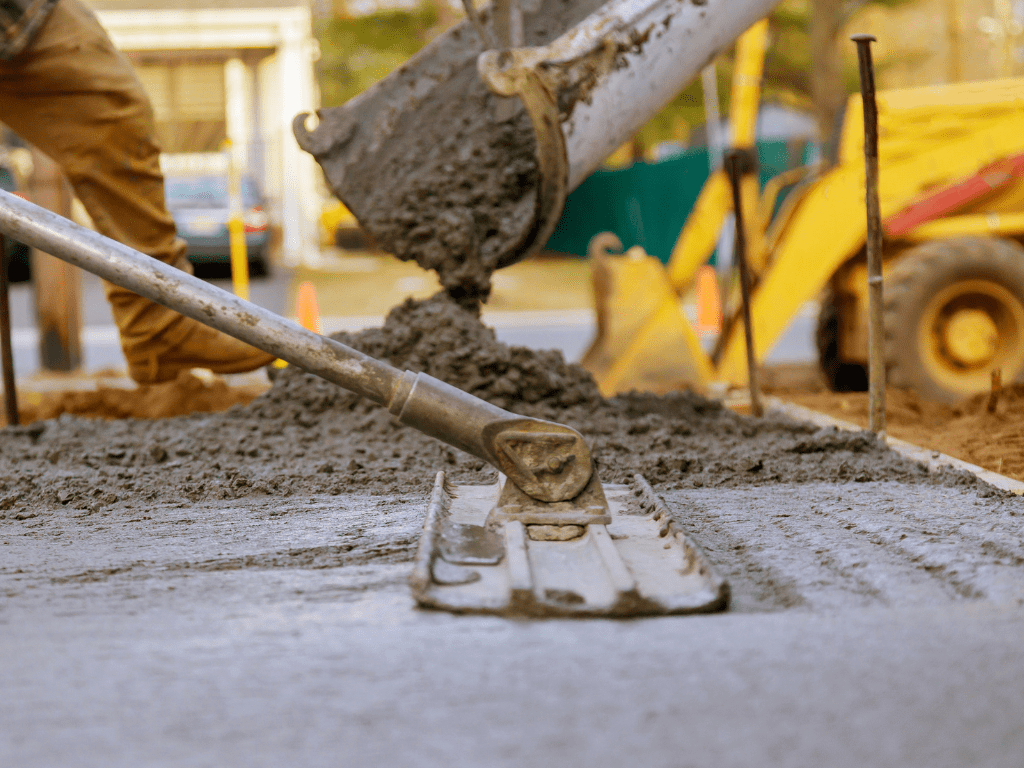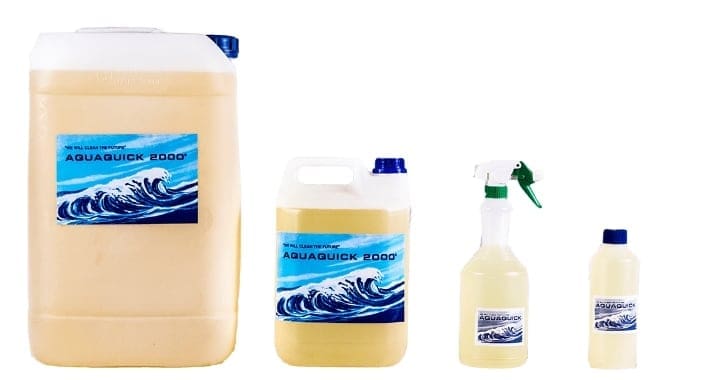Beton jest wszędzie, od dużych obiektów przemysłowych po domowe podjazdy. Jest wytrzymały, ale może zostać poplamiony olejem i smarem, co sprawia, że wygląda źle, a nawet może go uszkodzić. W tym przewodniku dowiemy się, jak czyścić plamy z betonu za pomocą specjalnych produktów zwanych odtłuszczaczami. Skupimy się na AQUAQUICK, przyjaznej dla środowiska opcji, która doskonale utrzymuje beton w czystości i wytrzymałości.
I. Jak działają odtłuszczacze do betonu
A. Mechanizmy działania
Wyjaśnienie procesów chemicznych i fizycznych zachodzących w beton odtłuszczanie:
Odtłuszczacze do betonu działają poprzez połączenie reakcji chemicznych i oddziaływań fizycznych w celu rozbicia i usunięcia smaru i oleju z powierzchni betonowych. Procesy te zazwyczaj obejmują następujące etapy:
a. Penetracja:
Po zastosowaniu odtłuszczacz wnika w porowatą strukturę betonu, docierając do osadzonych w nim smarów i olejów.
b. Emulgowanie:
Odtłuszczacze zawierają środki powierzchniowo czynne, które pomagają emulgować tłuszcz i olej, rozbijając je na mniejsze kropelki i zawieszając je w roztworze czyszczącym.
c. Zakłócenie wiązań molekularnych:
Aktywne składniki odtłuszczacza rozbijają wiązania molekularne cząsteczek smaru i oleju, powodując utratę ich właściwości adhezyjnych i oderwanie się od powierzchni betonu.
d. Solubilizacja:
Po rozbiciu cząsteczki tłuszczu i oleju stają się rozpuszczalne w roztworze czyszczącym, co pozwala na ich łatwe spłukanie.
Omówienie sposobu, w jaki odtłuszczacze rozbijają cząsteczki smaru i oleju w celu ich łatwego usunięcia:
Odtłuszczacze wykorzystują różne środki chemiczne i rozpuszczalniki do skutecznego rozbijania cząsteczek smaru i oleju. Podstawowe mechanizmy zaangażowane w ten proces obejmują:
Działanie rozpuszczalnika:
Odtłuszczacze na bazie rozpuszczalników rozpuszczają smary i oleje poprzez osłabianie wiązań między ich cząsteczkami. Rozpuszczalniki powszechnie stosowane w odtłuszczaczach obejmują węglowodory, alkohole i etery glikolu.
Działanie powierzchniowo czynne:
Środki powierzchniowo czynne w odtłuszczaczach na bazie wody pomagają zmniejszyć napięcie powierzchniowe między smarem/olejem a wodą, umożliwiając ich łatwiejsze mieszanie. Ułatwia to emulgowanie smaru i oleju, dzięki czemu są one łatwiejsze do usunięcia.
Działanie zasadowe lub kwasowe:
Niektóre środki odtłuszczające wykorzystują związki zasadowe lub kwaśne do zmiany pH roztworu czyszczącego, co może zwiększyć skuteczność odtłuszczania. Alkaliczne środki odtłuszczające są szczególnie skuteczne w przypadku zabrudzeń organicznych, podczas gdy kwaśne środki odtłuszczające są stosowane w przypadku zabrudzeń mineralnych.

B. Przygotowanie powierzchni
Znaczenie właściwego przygotowania powierzchni przed zastosowaniem odtłuszczaczy do betonu:
Właściwe przygotowanie powierzchni jest niezbędne do zapewnienia optymalnych wyników czyszczenia i zmaksymalizowania skuteczności odtłuszczaczy do betonu. Nieodpowiednie przygotowanie powierzchni może skutkować niepełnym usunięciem smaru lub nierównomiernym czyszczeniem. Znaczenie przygotowania powierzchni obejmuje:
Zwiększona wydajność odtłuszczacza:
Czyste powierzchnie umożliwiają odtłuszczaczom bezpośredni kontakt z osadami smaru i oleju, poprawiając ich zdolność do penetracji i rozpuszczania zanieczyszczeń.
Zapobieganie zanieczyszczeniom krzyżowym:
Przygotowanie powierzchni pomaga usunąć luźny brud, gruz i zanieczyszczenia, które mogą zakłócać działanie odtłuszczacza lub przyczyniać się do zanieczyszczenia krzyżowego roztworów czyszczących.
Zapewnienie jednolitych wyników:
Jednolite przygotowanie powierzchni zapewnia, że środki odtłuszczające są stosowane równomiernie na całej powierzchni betonu, zapobiegając powstawaniu smug, plam lub obszarów niekompletnego czyszczenia.
Etapy przygotowania powierzchni betonowych do odtłuszczania, takie jak czyszczenie, płukanie i suszenie:
Prawidłowe przygotowanie powierzchni obejmuje zazwyczaj następujące kroki:
a. Czyszczenie: Rozpocznij od usunięcia zanieczyszczeń powierzchniowych, brudu i luźnych zanieczyszczeń za pomocą miotły, szczotki lub myjki ciśnieniowej. Uporczywe plamy mogą wymagać użycia detergentu lub roztworu do wstępnej obróbki w celu poluzowania zabrudzeń.
b. Płukanie: Po zakończeniu czyszczenia należy dokładnie spłukać powierzchnię betonu wodą, aby usunąć wszelkie pozostałości środków czyszczących. Ten krok pomaga zapobiegać interakcjom chemicznym między środkiem odtłuszczającym a pozostałymi zanieczyszczeniami.
c. Suszenie: Przed nałożeniem środka odtłuszczającego należy odczekać, aż betonowa powierzchnia całkowicie wyschnie. Suszenie można przyspieszyć za pomocą wentylatorów lub dmuchaw, ale należy upewnić się, że powierzchnia jest całkowicie sucha, aby uniknąć rozcieńczenia odtłuszczacza lub pogorszenia jego skuteczności.
Postępowanie zgodnie z tymi krokami zapewnia, że powierzchnia betonu jest odpowiednio przygotowana do odtłuszczania, umożliwiając odtłuszczaczowi skuteczne działanie i osiągnięcie optymalnych wyników czyszczenia.

II. Rodzaje odtłuszczaczy do betonu
Środki do odtłuszczania betonu są dostępne w różnych formułach, w tym na bazie rozpuszczalników, wody i specjalnych opcji. Wybór odpowiedniego typu zależy od zastosowania i uwarunkowań środowiskowych.
Odtłuszczacze na bazie rozpuszczalników: Odtłuszczacze na bazie rozpuszczalników są skuteczne w usuwaniu trudnych plam ze smaru i oleju, ale mogą zawierać agresywne chemikalia, które stanowią zagrożenie dla środowiska i zdrowia. Nadają się do zastosowań przemysłowych z silnymi zanieczyszczeniami.
Odtłuszczacze na bazie wody: Odtłuszczacze na bazie wody stanowią bezpieczniejszą alternatywę, ponieważ są mniej toksyczne i bardziej przyjazne dla środowiska. Są idealne do użytku domowego i komercyjnego, zapewniając skuteczne czyszczenie bez uszczerbku dla bezpieczeństwa.
Specjalistyczne środki odtłuszczające: Specjalistyczne odtłuszczacze są dostosowane do konkretnych zastosowań, takich jak odtłuszczacze bezpieczne dla żywności do podłóg kuchennych lub odtłuszczacze przeznaczone do stosowania na wrażliwych powierzchniach, takich jak malowany beton.
III. Czynniki wpływające na wybór odtłuszczacza
- Kompatybilność powierzchni: Skład i tekstura betonu wpływają na skuteczność środków odtłuszczających. Powierzchnie porowate mogą wymagać innego rodzaju odtłuszczacza niż powierzchnie gładkie.
- Wpływ na środowisko: Wybór ekologicznych środków odtłuszczających minimalizuje szkody dla ekosystemu. Szukaj produktów oznaczonych jako biodegradowalne i nietoksyczne.
- Względy bezpieczeństwa: Wybór nietoksycznych środków odtłuszczających zapewnia bezpieczeństwo użytkownika i powierzchni. Unikaj produktów zawierających agresywne chemikalia, które mogą stanowić zagrożenie dla zdrowia.
IV. Przedstawiamy AQUAQUICK: Zrównoważone rozwiązanie i odtłuszczacz do betonu

AQUAQUICK wyróżnia się jako ekologiczna marka odtłuszczaczy zaangażowana w zrównoważony rozwój. Jego biodegradowalna formuła i nietoksyczny skład sprawiają, że jest to preferowany wybór dla użytkowników dbających o środowisko.
V. Zalety AQUAQUICK do odtłuszczania betonu
- Przyjazność dla środowiska: AQUAQUICK zmniejsza wpływ na środowisko w porównaniu z tradycyjnymi odtłuszczaczami. Jego biodegradowalna formuła rozkłada się naturalnie, minimalizując zanieczyszczenie.
- Skuteczność: Dowody potwierdzają doskonałą skuteczność AQUAQUICK w usuwaniu plam oleju i tłuszczu. Jego silna formuła wnika głęboko w pory betonu, z łatwością usuwając uporczywe plamy.
- Bezpieczeństwo: Jego nietoksyczny charakter zapewnia bezpieczną aplikację dla użytkowników i powierzchni. AQUAQUICK eliminuje ryzyko narażenia na szkodliwe chemikalia, dzięki czemu nadaje się do użytku w warunkach mieszkalnych, komercyjnych i przemysłowych.
- Efektywność kosztowa: AQUAQUICK oferuje długoterminową wartość dzięki skutecznym możliwościom czyszczenia i zmniejszonej potrzebie ponownego zastosowania. Jego skoncentrowana formuła pozwala na rozcieńczanie, wydłużając czas użytkowania i oszczędzając koszty.
VI. Techniki aplikacji i wskazówki
Prawidłowa aplikacja jest kluczem do maksymalizacji skuteczności odtłuszczacza do betonu:
- Współczynniki rozcieńczenia: Postępuj zgodnie z zaleceniami producenta dotyczącymi rozcieńczania AQUAQUICK w celu uzyskania optymalnych rezultatów. Dostosuj stężenie w zależności od stopnia zabrudzenia.
- Metody aplikacji: Nanieść AQUAQUICK równomiernie za pomocą sprayu, mopa lub szczotki, w zależności od powierzchni. Pozostawić wystarczającą ilość czasu, aby produkt mógł wniknąć w plamy.
- Przechowywanie i obsługa: AQUAQUICK należy przechowywać w odpowiedni sposób, aby zachować jego skuteczność i wydłużyć okres przydatności do użycia. Przechowywać z dala od bezpośredniego światła słonecznego i ekstremalnych temperatur.
VII. Strategie konserwacji
Po odtłuszczeniu za pomocą AQUAQUICK należy wdrożyć następujące strategie konserwacji:
- Regularne czyszczenie: Ustal rutynowe czyszczenie powierzchni betonowych, aby zapobiec wyciekom oleju i gromadzeniu się tłuszczu. Okresowo używaj AQUAQUICK, aby utrzymać czystość.
- Środki zapobiegawcze: Używać tac ociekowych lub materiałów pochłaniających, aby powstrzymać wycieki i zminimalizować zanieczyszczenie. Należy przeszkolić pracowników lub członków gospodarstwa domowego w zakresie prawidłowych procedur usuwania wycieków.
VIII. Podsumowanie: Lepsze czyszczenie betonu dzięki AQUAQUICK
AQUAQUICK oferuje zrównoważone rozwiązanie do odtłuszczania betonu, poparte jego przyjaznością dla środowiska, skutecznością, bezpieczeństwem i opłacalnością. Wybierz AQUAQUICK, aby ulepszyć rutynowe czyszczenie betonu i utrzymać nieskazitelne powierzchnie.
Dlaczego warto wybrać AQUAQUICK do odtłuszczania betonu?
Jeśli chodzi o odtłuszczanie betonu, AQUAQUICK wyróżnia się z kilku powodów:
- Przyjazny dla środowiska: Biodegradowalna formuła AQUAQUICK minimalizuje wpływ na środowisko, czyniąc go odpowiedzialnym wyborem dla świadomych ekologicznie konsumentów.
- Potężna wydajność: Doskonała moc czyszcząca AQUAQUICK zapewnia skuteczne usuwanie rozlanego oleju i plam tłuszczu, przywracając powierzchnie betonowe do ich pierwotnego stanu.
- Bezpieczny dla użytkowników i powierzchni: Dzięki nietoksycznemu składowi, AQUAQUICK stawia na pierwszym miejscu bezpieczeństwo, zapewniając spokój zarówno użytkownikom, jak i czyszczonym powierzchniom.
- Wartość długoterminowa: Opłacalność AQUAQUICK polega na jego zdolności do zapewniania trwałych rezultatów, zmniejszając częstotliwość ponownego stosowania i oszczędzając zarówno czas, jak i zasoby.

IX. Często zadawane pytania (FAQ)
P1: Czy AQUAQUICK jest bezpieczny dla roślin i zwierząt?
Tak, nietoksyczna formuła AQUAQUICK jest bezpieczna dla roślin i zwierząt, dzięki czemu nadaje się do stosowania na obszarach zewnętrznych, gdzie mogą występować dzikie zwierzęta.
P2: Czy AQUAQUICK może być stosowany na wszystkich rodzajach powierzchni betonowych?
AQUAQUICK jest kompatybilny z większością powierzchni betonowych, w tym z podjazdami, posadzkami garażowymi, chodnikami i posadzkami przemysłowymi. Jednak zawsze zaleca się przetestowanie najpierw małego obszaru pod kątem kompatybilności.
P3: Jak często powinienem używać AQUAQUICK do konserwacji?
Częstotliwość stosowania AQUAQUICK zależy od takich czynników, jak poziom ruchu i możliwość rozlania. W przypadku rutynowej konserwacji, stosowanie AQUAQUICK co kilka miesięcy może pomóc w utrzymaniu powierzchni betonowych w czystości i bez gromadzenia się tłuszczu.
P4: Czy AQUAQUICK ulega biodegradacji?
Tak, AQUAQUICK został opracowany z biodegradowalnych składników, które rozkładają się naturalnie, minimalizując wpływ na środowisko.
X. Wnioski
Podsumowując, AQUAQUICK oferuje doskonałe rozwiązanie do odtłuszczania betonu, łączące odpowiedzialność za środowisko, skuteczność, bezpieczeństwo i wartość. Wybierając AQUAQUICK, nie tylko zapewniasz czystość i trwałość powierzchni betonowych, ale także przyczyniasz się do zdrowszej planety. Dokonaj zmiany już dziś i poczuj różnicę dzięki AQUAQUICK.













